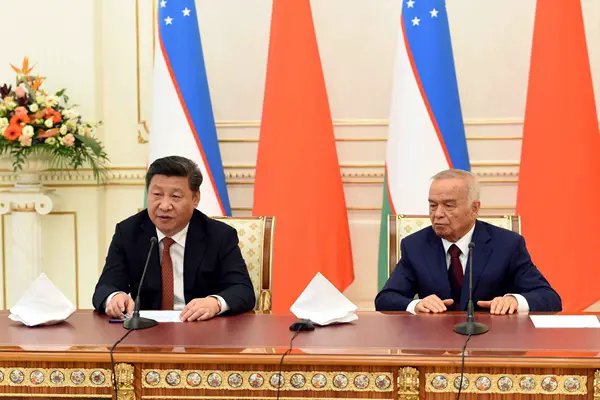South Korean President Park Geun-hye vowed Tuesday to lay the ground for reunification with the Democratic People's Republic of Korea (DPRK) and restructuring the economy during her remaining tenure of five-year term.
"It needs to prepare for reunification, opening a new era on the Korean Peninsula to achieve real peace on the peninsula and great leap forward in the Republic of Korea," Park told a press conference marking the first anniversary of her inauguration.
Park said that she will launch a presidential preparatory committee for reunification, where people of all ranks and classes, including private experts and civic groups, can collect extensive opinions and draw up a blueprint for the reunification.
The first South Korean female president cited sadness and suffering of families separated by the Korean War, noting that the two Koreas have been divided so long.
Park made the remarks when hundreds of Koreans separated by the 1950-53 war ended the six-day family reunion Tuesday morning in the DPRK's Mount Kumgang resort, the first such humanitarian event since October 2010.
According to the government data, more than 70,000 South Koreans have been on the waiting list for the family reunion since 1988, with all the applicants expected to pass away within 20 years from now on.
The family reunion is an urgent, humanitarian issue on the Korean Peninsula given that millions of Koreans have been separated from their relatives since the Korean War ended in armistice in 1953, which has banned exchange of letters and phone calls.
Park said the South Korean government will expand non-political exchanges with the DPRK at the request of the Unification Ministry in its annual report to the president.
The ministry said that it will expand civilian exchanges between the two Koreas and restart cooperation in agricultural and livestock sectors with Pyongyang this year.
On Monday, South Korea offered to hold working-level talks with the DPRK to discuss how to stop spread of the foot-and-mouth disease in the North.
Meanwhile, Park unveiled in her speech a three-year economic innovation plan aimed at speeding up growth of the economy being trapped in low growth due to aging population and lackluster investment in private sector.
Park said that the economy comes to a crossroad to determine whether it will stand still or leap forward in the future, warning that the fast-follower strategy reaches the limit and abnormal business practices undermine efficiency and dynamism of the economy.
Under the economic blueprint, the government will lift growth potential to the 4 percent range by 2017, and achieve the goals of 70 percent employment rate and 40,000 U.S. dollars per capita national income.
The export-driven economy, though enjoyed rapid growth, entailed various side effects such as chronically flagging domestic demand caused by heavy dependence on large-size exporters, fast-follower growth strategy with lack of innovation and abnormal business practices.
To cure the structural ailment, the three-year plan will focus on three major points: normalizing abnormal business practices, invigorating the creative economy and balancing growth between domestic demand and exports.
Park's pledge was in a roughly right direction as it sought to rectify structural problems. Lifting growth potential was urgent as the Asia's fourth-largest economy was feared to fall into middle income trap, which means a halt of economic development due to aging population and lackluster corporate investment.
The Organization for Economic Cooperation and Development warned that South Korea's potential growth rate may plunge to the 1 percent level some 25 years later due to the fast aging population and the expected drop in productive population. The potential growth rate was estimated at around 3.5 percent by local economists.
In theory, potential growth can be boosted by putting more production factors such as capital and labor into an economy, but it may not be applied to the South Korean economy as it already rose to the near-developed status.
Improving productivity of labor and capital is another way of lifting growth potential. The creative economy can help create high value-added industries by converging technologies and industries.
 简体中文
简体中文

